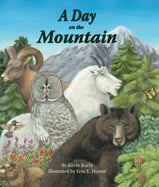Alignment to Standards for UT

| Grade | Number | Standard |
|---|---|---|
| 1 | CC-1.III.2d. | Describe how plants and people need, use, and receive water. |
| 2 | CC-2.III.1 | Investigate relationships between plants and animals and how living things change during their lives. |
| 2 | CC-2.III.1a. | Observe and describe relationships between plants and animals. |
| 3 | SC-3.II | organisms depend on living and nonliving things within their environment. |
| 3 | SS-3.I.2a. | the major world ecosystems: desert, plain, tropic, tundra, grassland, mountain, forest, wetland |
| 4 | SC-4.V | Students will understand the physical characteristics of Utahs wetlands, forests, and deserts and identify common organisms for each environment. |
| 4 | SC-4.V.1 | Describe the physical characteristics of Utahs wetlands, forests, and deserts. |
| 4 | SC-4.V.1b. | Describe Utahês wetlands (e.g., river, lake, stream, and marsh areas where water is a major feature of the environment) forests (e.g., oak, pine, aspen, juniper areas where trees are a major feature of the environment), and deserts (e.g., areas where the |
| 4 | SC-4.V.1c. | Locate examples of areas that have characteristics of wetlands, forests, or deserts in Utah. |
| 4 | SC-4.V.1d. | Based upon information gathered, classify areas of Utah that are generally identified as wetlands, forests, or deserts. |
| 4 | SC-4.V.2 | Describe the common plants and animals found in Utah environments and how these organisms have adapted to the environment in which they live. |
| 4 | SC-4.V.2a. | Identify common plants and animals that inhabit Utahs forests, wetlands, and deserts. |
| 4 | SC-4.V.2b. | Cite examples of physical features that allow particular plants and animals to live in specific environments (e.g., duck has webbed feet, cactus has waxy coating). |
| 4 | SC-4.V.2c. | Describe some of the interactions between animals and plants of a given environment (e.g., woodpecker eats insects that live on trees of a forest, brine shrimp of the Great Salt Lake eat algae and birds feed on brine shrimp). |
| 4 | SC-4.V.2d. | Identify the effect elevation has on types of plants and animals that live in a specific wetland, forest, or desert. |
| 4 | SC-4.V.3 | Use a simple scheme to classify Utah plants and animals. |
| 4 | SC-4.V.4b. | Describe how the behavior and adaptations of Utah mammals help them survive winter (e.g., obtaining food, building homes, hibernation, migration). |
| 4 | SC-4.V.4c. | Research and report on the behavior of a species of Utah fish (e.g., feeding on the bottom or surface, time of year and movement of fish to spawn, types of food and how it is obtained). |
| 4 | SS-4.II.3b. | Describe the role of producers and consumers. |
| 5 | SC-5.II.2a. | Identify specific geological features created by volcanoes, earthquakes, and uplift. |
| 5 | SC-5.II.2b. | Give examples of different landforms that are formed by volcanoes, earthquakes, and uplift (e.g., mountains, valleys, new lakes, canyons). |
| 5 | SC-5.V.1d. | Contrast inherited traits with traits and behaviors that are not inherited but may be learned or induced by environmental factors (e.g., cat purring to cat meowing to be let out of the house; the round shape of a willow is inherited, while leaning away fr |
| 5 | SC-5.V.2 | Describe how some characteristics could give a species a survival advantage in a particular environment. |
| 5 | SC-5.V.2b. | some environments give one species a survival advantage over another (e.g., warm water favors fish such as carp, cold water favors fish such as trout, environments that burn regularly favor grasses, environments that do not often burn favor |
| 5 | SC-5.V.2c. | a particular physical attribute may provide an advantage for survival in one environment but not in another (e.g., heavy fur in arctic climates keep animals warm whereas in hot desert climates it would cause overheating; flippers on such anim |